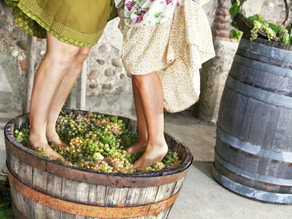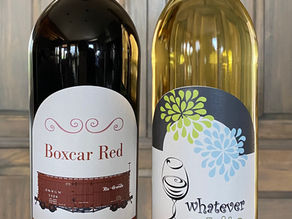Bob's Blog #2 - Mostly About Wine Bottles
- Bob Dolci
- Jun 10, 2019
- 3 min read
Updated: Jun 10, 2019

Let’s have a one-sided conversation about wine bottles. Not that there is anything that is even remotely interesting about wine bottles. Before I get into subject of wine bottles let me diverge for a minute on that incredibly boring topic and talk about two buck chuck. Did you know that if you purchase wine bottles in quantities of 1000 or more you can get them for about 50¢ each? The cost of wine labels, corks, and sleeves per bottle cost around 50¢. Just a guess but let’s say that the cost to package and ship a bottle of wine is 25¢. The total is $1.25 per bottle. That means the wine in a bottle of two buck chuck costs about 75¢. Okay, maybe two buck chuck is now three buck chuck. Or is it? Not sure. Ya know chuck means to throw out and buck means to oppose. Kinda sounds like I’m slamming Trader Joe’s two buck chuck. It’s hard to slam it when it has done very well in blind taste test and has won several awards. Yup, it has.
On to my one-sided conversation about wine bottles. As we know, wine bottles come in all shapes, sizes, colors and even vintages. They can be tall or short, slender or stout, clear, green, blue, or light brown. I bet you thought that the shape of the wine bottle determined if it was best suited for white wine or red wine. Yeah, no. So okay maybe that’s what I thought. The bottle shape doesn’t make a difference in terms of impacting the wine’s flavor, aging or anything else for that matter. Well, maybe I shouldn’t have been so flip as to imply that the shape has no inherent meaning. It’s all about tradition and history. It’s more about where the wine originally came from and who bottled it.
Did you know that there are literally, yes, I mean literally, hundreds of different bottle shapes? While cleaning and sanitizing the bottles that we will use for bottling the Amarone wine, of the bottles I was cleaning, I noticed four distinct types. At first glance I thought that there were only two types. You know, the red wine type and the white wine type. Wrong again.
To make life easier for myself I decided that I only needed to know about the Burgundy bottle and the Bordeaux bottle.
THE BURGUNDY BOTTLE
The first bottle of the two types to become common place was the Burgundy. Supposedly it was first “blown” in the early 1800. Speculation is that the bottle’s curved sides is such simply because it was easier for glassmakers to blow. Following the bottle’s creation, in Burgundy France, the wine producers responsible for making the first wines out of Chardonnay and Pinot Noir, began using the bottles to bottle their red and white Burgundies. Within a relatively short period of time, less than 50 years, the “Burgundy” bottle became the bottle of choice to house good Pinot and Chardonnay. It became the standard for many white wines and wines that were similar in complexity and flavor as Pinot Noir.
THE BORDEAUX BOTTLE
Shortly after the creation of the Burgundy bottle came the ubiquitous Bordeaux bottle. The wine makers in Bordeaux France chose it to house their red wines. It rapidly became the bottle of choice to hold the two most popular red wines in the world, Cabernet Sauvignon and Merlot. So, what’s the difference between the two bottle types you ask? The Bordeaux bottle has distinctive shoulders and the Burgundy bottle has sloped sides. Wine bottle historians believe that these shoulders were created in order to catch the sediment that could often accumulate in the bottom of the bottle. Sounds good but who really knows?
To coin a phrase, that’s my brief but spectacular take on the two most common wine bottles.















This is great!!! I love Bobs Blog! Thank you for taking the time to do this I learned a lot and also enjoy your humor as always! hope you can keep this up, your amazing!